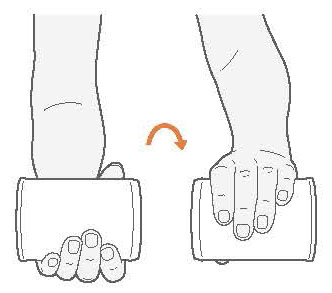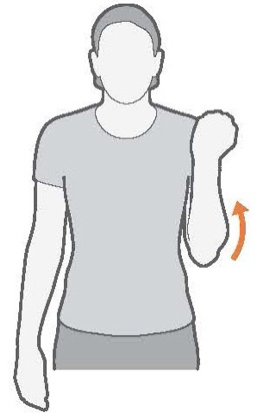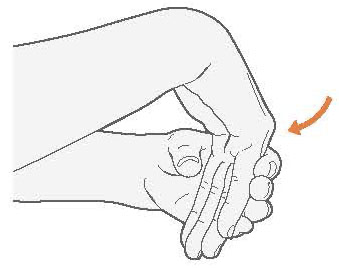This week, we celebrate National Play Tennis Day. Here at YOUtherapies we are big fans of tennis and all the fun, socialising, exercise and healthy competition that comes along with it. One of the common injuries that people associate with tennis is ‘Tennis elbow’. This month’s blog post will inform us a little on the condition, and how we can treat it and prevent it in the future. Let’s jump in!
What is tennis elbow?
Tennis elbow, also known as lateral epicondylitis is a condition where one experiences pain on the outer side of the elbow. Despite the name, tennis elbow is not limited to those that only play tennis, it is associated with manual jobs or hobbies that involve the arm, wrist or hand. For example mechanics, chefs, waiters, musicians, cleaners, painters, IT workers (Van Rijn 2009). Sports that you may come across tennis elbow include squash, tennis, badminton, swimming and field throwing sports. Tennis elbow is sometimes associated with poor backhand form in racket sports.
- Tennis elbow most commonly affects those between 30 and 50 years old (Karanasios et al 2021).
- In a study by Nirschl, of 200 tennis players aged > 30, 50% had symptoms of tennis elbow at some stage.
- Tennis elbow evenly affects both men and women.
How does it occur?
Tennis elbow is usually caused by overuse or repetitive motion of the forearm muscles. The muscles that move the wrist attach to the outside of the elbow, which is where these tendons can become painful or inflamed. You can imagine in all the professions and sports listed above, the repetitive load that is placed on the forearm is quite significant.
In many cases of tennis elbow there might not actually be inflammation but rather lots of little degenerative tears within the tendon so it is important to get assessed to ensure that you are managing your condition correctly.
What does it feel like?
Symptoms may present as pain, burning or aching along the outside of the elbow. Sometimes the pain can radiate upwards along the upper arm and downwards along the outside of the forearm and even as far as the third and fourth fingers in some cases. Some people may experience difficulty gripping or lifting due to pain and/or weakness.
What can we do to manage tennis elbow?
If you’re experiencing tennis elbow. The following conservative management strategies may help you.
- Relative rest: to prevent aggravating the elbow pain in the acute stages.
- Ice: may help as pain relief for you in the short-term. Try 15 minutes 3 to 4 times a day (Mayo Clinic, 2023).
- Non-steroidal anti-inflammatory drugs: to help reduce the inflammation and pain in the area as a possible short-term solution.
- Physiotherapy: can help educate you on the condition, assess your elbow, provide a treatment plan which will likely include strengthening and stretching exercises. We can provide management strategies to tailor your sport or work to ensure you can continue without causes further pain or damage to your elbow and surrounding tendon.
- Exercise is central to management of tennis elbow. There is evidence of benefits from exercise alone or as a part of a multimodal physiotherapy regime. In patients with chronic tennis elbow, exercise has been shown to lead to greater and faster improvements in pain, less sick leave, fewer medical consultations, and increased work ability (Coombes et al. 2015)
- Remember to warm up and increase your load on the elbow slowly whether that’s in a work environment or a leisure sport. By priming the muscles and tendons around the wrist and elbow we can manage this condition quite successfully!
Here are a few simple exercises that may help strengthen your forearm muscles (Chartered Society of Physiotherapy, 2017).

Wrist turn
- Bend your elbow at a right angle and hold out your hand, palm up.
- Turn your wrist slowly so that your palm is now facing down.
- Hold for 5 seconds, and then slowly release.
- Do 3 sets of 10 repetitions.
- Wrist turn with weight
Repeat the exercise while holding a light weight (e.g. a tin of beans).

Wrist lift (palm up)
- Bend your elbow at a right angle.
- Hold a light weight (e.g. a tin of beans), palm up.
- Bend your wrist slowly towards you.
- Hold for 5 seconds, and then slowly release.
- Do 3 sets of 10 repetitions.

Elbow bend
- Stand up straight and lower your arm to one side.
- Bend your arm slowly upwards so your hand is touching your shoulder.
- Hold for 15–30 seconds.
- Repeat 10 times.

Wrist flex
- Keeping your arm straight in front with your palm facing down, gently bend your wrist down.
- Use the opposite hand to press the stretching hand back towards your body and hold for 15–30 seconds.
- Straighten your wrist.
- Gently bend the stretching hand backwards and use the opposite hand to pull the fingers back.
- Hold for 15–30 seconds. Do 3 sets with each wrist.
References:
Coombes BK, Bisset L, Vicenzino B. Management of Lateral Elbow Tendinopathy: One Size Does Not Fit All. J Orthop Sports Phys Ther. 2015 Nov;45(11):938-49. doi: 10.2519/jospt.2015.5841. Epub 2015 Sep 17. PMID: 26381484.
Nirschl R. Tennis elbow. Orthop North Am. 1973;4:787-99.
van Rijn RM, Huisstede BM, Koes BW, Burdorf A. Associations between work-related factors and specific disorders at the elbow: a systematic literature review. Rheumatology (Oxford). 2009 May;48(5):528-36. doi: 10.1093/rheumatology/kep013. Epub 2009 Feb 17. PMID: 19224937.




